A giant ant colony is pumped full of concrete, then excavated to reveal the complexity of its inner structure.
The San Isidro Labrador Chapel
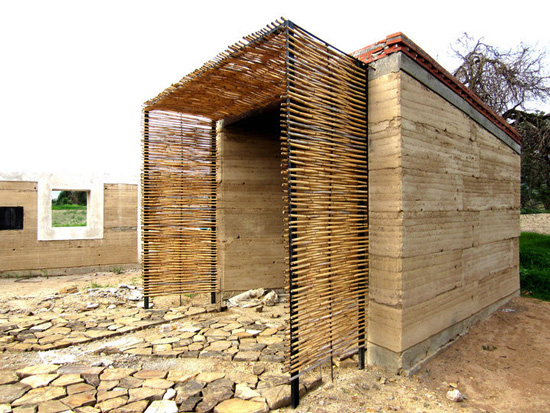
The San Isidro Labrador Chapel is a collaborative effort of many people, the tangible demonstration of the cooperation of architects, engineers, craftsmen, peasants, creative people and students.
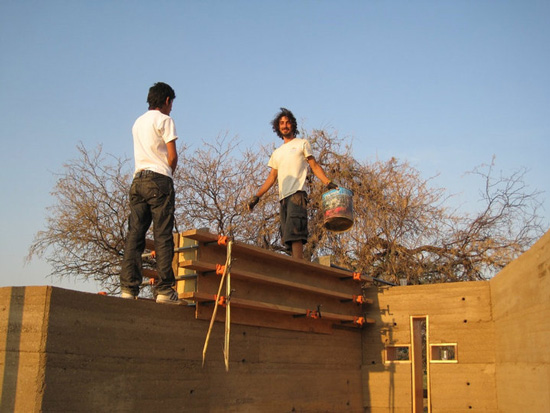
João Caeiro e Capurso Fulvio got together with Benito Guzman Canseco (President of the Consejo y Oaxaca Nopal Tuna, e Mayordomo de San Isidro in the years 2009-2010) to organize a series of courses to endorse people with the ability to build houses with noble materials from the region.
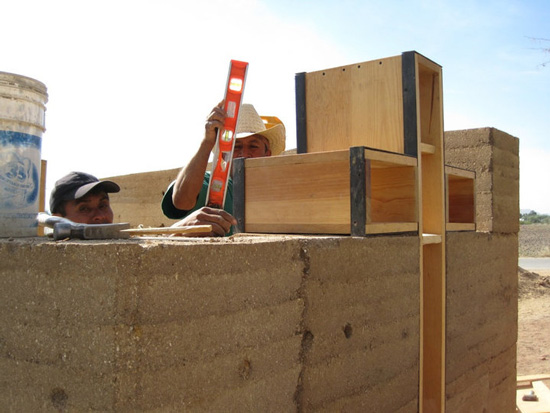 These courses, mostly hands-on, are addressed to people seeking to build their own houses, within a philosophy of low cost, high quality and contemporary design.
These courses, mostly hands-on, are addressed to people seeking to build their own houses, within a philosophy of low cost, high quality and contemporary design.
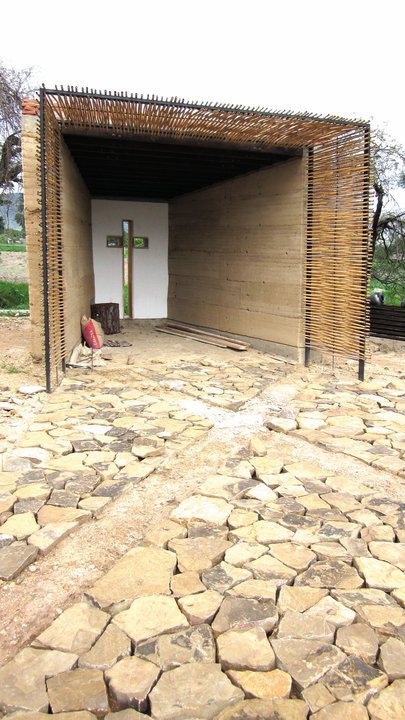
The first opportunity emerged in San Bartolo Coyopec, for the construction of a chapel for the saint patron of the cultivated fields, annually celebrated. The building was finished in may 2010.

The Wales Institute for Sustainable Education
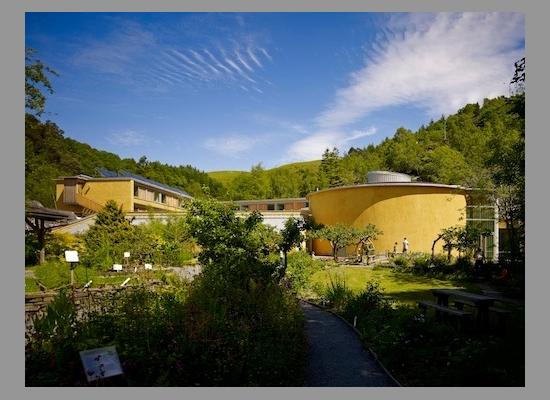
The Wales Institute for Sustainable Education (Wise), designed by architects Pat Borer and David Leais, uses “Basically plants and earth,” to quote Borer. Also animals, as in addition to a timber frame, rammed earth walls and a coating of lime and hemp, it uses sheep’s wool for thermal insulation. Wise is part of Cat, the Centre for Alternative Technology.
[ Architects Journal ]
ecologik Magazine
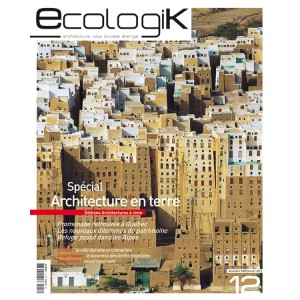
The Decembery/January issue of the French language magazine, ecologik, is devoted to the subject of Architecture en Terre.
SOMMAIRE #12 – décembre 2009/janvier 2010
ACTUALITÉ: réalisations – concours – expositions – les forêts, un marché de dupes ? – lumière : perspectives urbaines – livre, de la lutte des classes à la lutte des places
SOCIÉTÉ: la ville durable et connectée
URBANISME ET PAYSAGE: métamorphose d’une autoroute
PROCESSUS ET TECHNIQUES: les nouveaux dilemmes du patrimoine
DOSSIER EN TERRE: sur les traces d’un patrimoine mondial – manifeste pour le droit de construire en terre crue – le CRAterre, l’expérience made in France – retour d’expérience sur le Domaine de la Terre – la physique des grains – terre contemporaine : hôtel Amankora au Bouthan, maison d’habitation en pisé en Colombie, workshop structures en terre au Bangladesh, architecture d’intérieur à Paris, centre culturel du désert Nk’mip au Canada, maison Palmer-Rose aux Etats-Unis, maison Rauch en Autriche, école de Maosi en Chine, école des Arts au Mexique
INNOVATIONS: eaux de pluie, eaux usées : collecter, assainir et valoriser
BÂTIR SAIN: l’air est-il plus respirable dans un bâtiment LEED ou HQE?
SUISSE: passif en plein massif
PROSPECTIVE: accessibilité : et si on osait le pragmatisme ?
Banasura Hill Resort
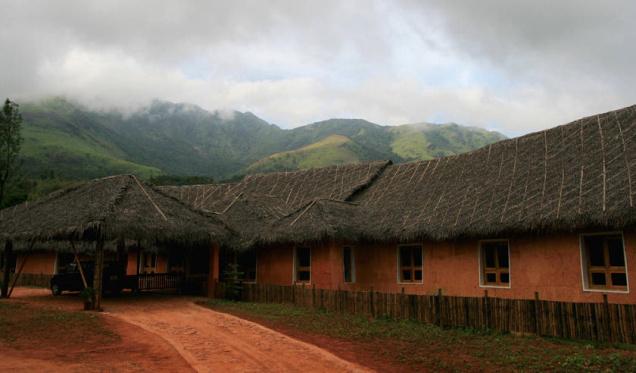
The undulating Banasura Hills in Wayanad stand as sentinels to the biggest earth dam in India, the Banasura Sagar dam. Just a few kilometres away, in rugged hilly terrain, stands the Banasura Hill Resort, said to be the biggest earth resort in the country. The rammed earth walls of the resort is built with mud from the very site that it stands on. Earth scooped out from the hill slope to create a plain was used to build the resort. Local tribals were called in for the labour and their expertise in building with mud was also tapped.
RIBA Lectures
The Royal Institute of British Architecture is hosting a series of earth architecture related lectures in their series: The Art of Mud Building: Heritage and Sustainability. Here is the lineup:
Down to Earth, Paul Oliver
Talk Tuesday 2 March, 18.30
RIBA
Join Paul Oliver, acclaimed academic and Emeritus Professor at the International Vernacular Architecture Unit, Oxford Brookes University, for a stimulating talk about the future of vernacular building traditions and their role in creating sustainable, culturally vibrant, people orientated places to live.
Part of the International Dialogues talks programme.
Tickets: £8.50/£5.50
The Future of Mud: Tales of Houses and Lives in Djenné
Film Monday 8 March, 19.00
SOAS, Russell Square, London WC1H
A documentary film that explores the challenges and choices faced by a mason’s family, raising vital questions about heritage and changing traditions. French and Bamana with English subtitles.
Restoring Mud Mosques in Mopti, Djenné and Timbuktu
Talk Thursday 11 March, 20.30
The Ismaili Centre, Cromwell Road, London SW7
Join Christophe Bouleau from the Aga Khan Trust for Culture as he talks about the restoration of the extraordinary mud mosques of Mali.
Restoring the Splendour of Djenné
Talk Thursday 18 March, 19.00
SOAS, Russell Square, London WC1H
Join Rogier Bedaux and Annette Schmidt, Volkenkunde Museum and the architect Pierre Maas, to discuss the cooperative venture between Mali and the Netherlands.
Behind the Façade in Djenné
Talk Thursday 25 March, 19.00
SOAS, Russell Square, London WC1H
Join Michael Rowlands, UCL and Charlotte Joy, Cambridge as they discuss how to create local value for cultural heritage through sustainable architectural tradition.
Economic and Environmental Sustainability
Talk Thursday 29 April, 19.00
SOAS, Russell Square, London WC1H
Join Rowland Keable, Ram Cast CIC, for an expert presentation on structures, standards and models for earth building in the 21st century.
ASTM E2392 – 05
A Standard Guide for Design of Earthen Wall Building Systems, ASTM E2392 – 05, has been announced and can be purchased by clicking here.
1. Scope
1.1 This standard provides guidance for earthen building systems that address both technical requirements and considerations for sustainable development. Earthen building systems include adobe, rammed earth, cob, cast earth and other earth technologies used as structural and non-structural wall systems.
1.1.1 There are many decisions in the design and construction of a building that can contribute to the maintenance of ecosystem components and functions for future generations, that is, sustainability. One such decision is the selection of products for use in the building. This standard addresses sustainability issues related to the use of earthen wall building systems.
1.1.2 The considerations for sustainable development relative to earthen wall building systems are categorized as follows: materials (product feedstock); manufacturing process; operational performance (product installed); and indoor environmental quality (IEQ).
1.1.3 The technical requirements for earthen building systems are categorized as follows: design criteria, structural and non-structural systems, and structural and non-structural components.
1.2 This standard does not provide guidance for structural support of roofs made of earthen material.
1.3 This standard does not purport to address all of the safety concerns, if any, associated with its use. It is the responsibility of the user of this standard to establish appropriate safety and health practices and to determine the applicability of regulatory limitations prior to use.
Villa Jasmin

The Villa Jasmin was designed by Moroccan architect Elie Mouyal and ADAMA Building & Architecture Ltd. The walls are constructed of load bearing rammed earth with fired vaulted adobe brickwork ceilings.The house is named after the mediterranean flower, and represents a neo-traditional style of architecture that reflects influences from the bizanthine, nubian, greco-roman and moorish styles.

The house is build around a patio that has a south aperture. The patio is the center of the house and the center of the patio has a flat fountain that is an allusion to water source of life. Walls are contructed of stabilized rammed earth in compliance with australian standard that reach high strength of near 2200 psi with 5 % of cement content.
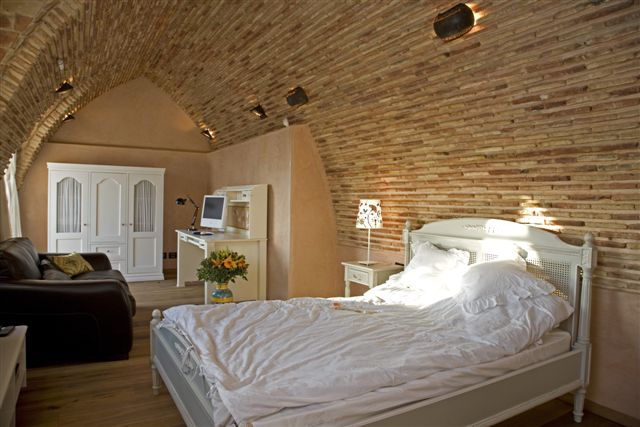
The ceilings employ the nubian technique for laying bricks without need of forms that reduce timber use to minimum. Bricks are layed with mortar in circular or curved patterns each row laying on the previous with continuous care on stability, transfering thrust to the walls. The pointed arched vaults employ a corbelled coursing of the bricks, alleviating the use of scafoling.
European School for Earth Building
FAL e.V. invites you to participate in our trainer courses 2010 Clay Plaster for trainers I and II, see below. For both courses you can apply for an individual grant within the European Programme Grundtvig. The grant covers basicly all costs: course fee, accommodation, full board and travel costs. Conditions for applying for a Grundtvig grant are: You live in one of the member states of the European Union ( exept Germany) and you work in or you are a member of an organisation, company, NGO .., which is more or less involved in adult education. This may also be a company training self builders or training on building sites. If you are interested in participating in our 2010 European courses and you want to ask for a Grundtivig mobility grant, the deadline for submitting your application is the 15 January 15th 2010. For information on the course and on how to obtain the grant please see http://lernpunktlehm.de/wp3/?page_id=324
Comenius/Grundtvig course DE-2010-1018-001
New Educational Approach in Sustainable Natural Building Part I
Clay Plaster – Module 1
Workshop for trainers and educators
Trainer: Burkard Rüger
May 15th – May 22nd 2010
Comenius/Grundtvig course DE-2010-1019-001
New Educational Approach in Sustainable Natural Building Part II
Clay Plaster – Module 2
Workshop for trainers and educators
Trainer: Irmela Fromme and Andrea Silbermann
Guest: Japanese master plasterer Harada
July 17th – July 25th 2010
Apply for a grant within the EU-Progamme Grundtvig!
You find the courses on the Grundtvig Data base http://ec.europa.eu/education/trainingdatabase/
Language: The course language will be mainly English. However our trainers speek English, French and German. If you are not familiar with these languages we can provide training materials also in Bulgarian, Czech, Polish, Greek, Slowenian and Slowak language. Ask your National Agency for Grundtvig on the conditions for applying for a grant. You will find the addresses of your national agency here.
Please contact herz@earthbuilding.eu, if you need more information. We also would like to inform you about the Grundtvig course” Permaculture Educators’ Course including Transition Initiatives, June 11th – 18th 2010 , by our partners Living House in Denmark. For more information contact:
Uta Herz
FAL e.V.
European School for Earth Building
www.earthbuilding.eu
Tel: 0049 30 41 716601
email: herz@earthbuilding
Clifton Schooley & Assoc. Rammed Earth Designers & Builders
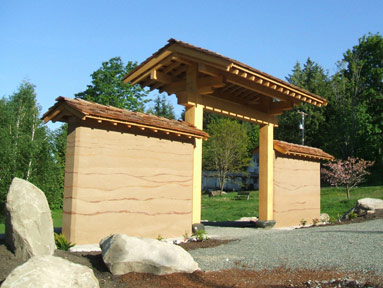
Clifton Schooley & Assoc. Rammed Earth Designers & Builders specialize in the construction of insulated rammed earth walls and are available to build anywhere in Canada. This twist on a traditional Japanese gate used material sourced 7 minutes from the building site and was designed by the Japanese Garden Society of Salt Spring Island, BC, Canada.
